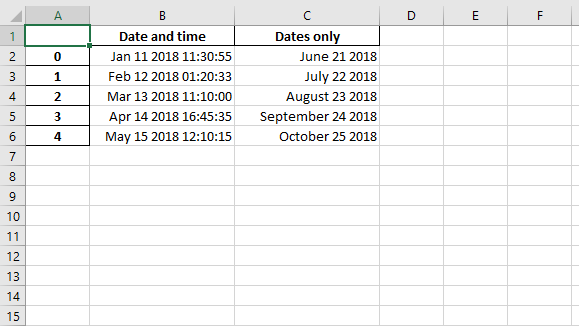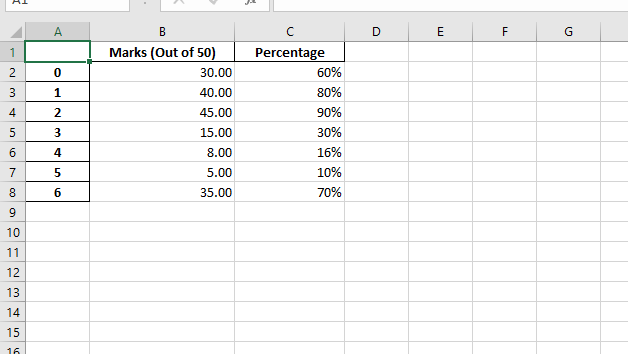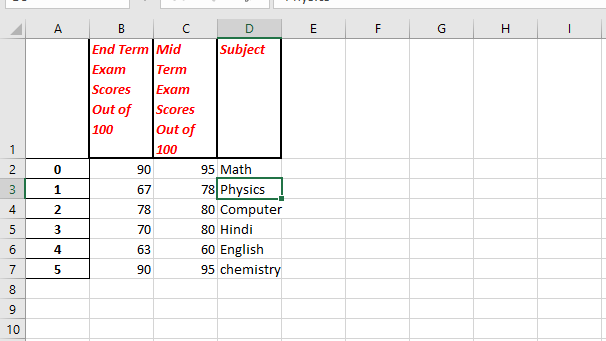先决条件: Python与pandas和xlsxwriter一起使用设置1
Python Pandas是一个数据分析库。它可以读取, 过滤和重新排列大小数据集, 并以包括Excel在内的多种格式输出它们。
大熊猫使用XlsxWriter模块写入Excel文件。
XlsxWriter是用于以XLSX文件格式写入文件的Python模块。它可以用于将文本, 数字和公式写入多个工作表。此外, 它还支持格式设置, 图像, 图表, 页面设置, 自动过滤器, 条件格式设置等功能。
代码1:使用Pandas和XlsxWriter将具有日期时间的Pandas数据帧转换为具有默认日期时间和日期格式的Excel文件。
# import pandas library as pd
import pandas as pd
# from datetime module import
# datetime and date method
from datetime import datetime, date
# Create a Pandas dataframe from some datetime data.
# datetime(year, month, date, hour, minute, second)
# date(year, month, date)
dataframe = pd.DataFrame({
'Date and time' : [ datetime( 2018 , 1 , 11 , 11 , 30 , 55 ), datetime( 2018 , 2 , 12 , 1 , 20 , 33 ), datetime( 2018 , 3 , 13 , 11 , 10 ), datetime( 2018 , 4 , 14 , 16 , 45 , 35 ), datetime( 2018 , 5 , 15 , 12 , 10 , 15 )], 'Dates only' : [ date( 2018 , 6 , 21 ), date( 2018 , 7 , 22 ), date( 2018 , 8 , 23 ), date( 2018 , 9 , 24 ), date( 2018 , 10 , 25 ) ], })
# Create a Pandas Excel writer
# object using XlsxWriter as the engine.
# Also set the default datetime and date formats.
# mmmm dd yyyy => month date year
# month - full name, date - 2 digit, year - 4 digit
# mmm d yyyy hh:mm:ss => month date year hour: minute: second
# month - first 3 letters , date - 1 or 2 digit , year - 4 digit.
writer_object = pd.ExcelWriter( "Example_datetime.xlsx" , engine = 'xlsxwriter' , datetime_format = 'mmm d yyyy hh:mm:ss' , date_format = 'mmmm dd yyyy' )
# Write a dataframe to the worksheet.
dataframe.to_excel(writer_object, sheet_name = 'Sheet1' )
# Create xlsxwriter worksheet object
worksheet_object = writer_object.sheets[ 'Sheet1' ]
# set width of the B and C column
worksheet_object.set_column( 'B:C' , 20 )
# Close the Pandas Excel writer
# object and output the Excel file.
writer_object.save()输出:

代码2:
使用Pandas和XlsxWriter将Pandas数据框转换为具有列格式的Excel文件。
# import pandas lib as pd
import pandas as pd
# Create a Pandas dataframe from some data.
dataframe = pd.DataFrame(
{ 'Marks (Out of 50)' : [ 30 , 40 , 45 , 15 , 8 , 5 , 35 ], 'Percentage' : [. 6 , . 8 , . 9 , . 3 , . 16 , . 1 , . 7 ], })
# Create a Pandas Excel writer
# object using XlsxWriter as the engine.
writer_object = pd.ExcelWriter( "Example_column.xlsx" , engine = 'xlsxwriter' )
# Write a dataframe to the worksheet.
dataframe.to_excel(writer_object, sheet_name = 'Sheet1' )
# Create xlsxwriter workbook object .
workbook_object = writer_object.book
# Create xlsxwriter worksheet object
worksheet_object = writer_object.sheets[ 'Sheet1' ]
# Create a new Format object to formats cells
# in worksheets using add_format() method .
# number taken upto 2 decimal places
# format object is create.
format_object1 = workbook_object.add_format({ 'num_format' : '# 0.00' })
# Integral percentage format object is create.
format_object2 = workbook_object.add_format({ 'num_format' : '0 %' })
# Note: It isn't possible to format
# any cells that already have a format
# such as the index or headers or any
# cells that contain dates or datetimes.
# Set the column width and format.
worksheet_object.set_column( 'B:B' , 20 , format_object1)
# Set the column width and format.
worksheet_object.set_column( 'C:C' , 15 , format_object2)
# Close the Pandas Excel writer
# object and output the Excel file.
writer_object.save()输出:

代码3:
使用Pandas和XlsxWriter将Pandas数据框转换为具有用户定义的标头格式的Excel文件。
# import pandas lib as pd
import pandas as pd
data1 = [ "Math" , "Physics" , "Computer" , "Hindi" , "English" , "chemistry" ]
data2 = [ 95 , 78 , 80 , 80 , 60 , 95 ]
data3 = [ 90 , 67 , 78 , 70 , 63 , 90 ]
# Create a Pandas dataframe from some data.
dataframe = pd.DataFrame(
{ 'Subject' : data1, 'Mid Term Exam Scores Out of 100' : data2, 'End Term Exam Scores Out of 100' : data3})
# Create a Pandas Excel writer
# object using XlsxWriter as the engine.
writer_object = pd.ExcelWriter( "Example_header.xlsx" , engine = 'xlsxwriter' )
# Write a dataframe to the worksheet.
# we turn off the default header
# and skip one row because we want
# to insert a user defined header there.
dataframe.to_excel(writer_object, sheet_name = 'Sheet1' , startrow = 1 , header = False )
# Create xlsxwriter workbook object .
workbook_object = writer_object.book
# Create xlsxwriter worksheet object
worksheet_object = writer_object.sheets[ 'Sheet1' ]
# Create a new Format object to formats cells
# in worksheets using add_format() method .
# here we create a format object for header.
header_format_object = workbook_object.add_format({
'bold' : True , 'italic' : True , 'text_wrap' : True , 'valign' : 'top' , 'font_color' : 'red' , 'border' : 2 })
# Write the column headers with the defined format.
for col_number, value in enumerate (dataframe.columns.values):
worksheet_object.write( 0 , col_number + 1 , value, header_format_object)
# Close the Pandas Excel writer
# object and output the Excel file.
writer_object.save()输出:

注意怪胎!巩固你的基础Python编程基础课程和学习基础知识。
首先, 你的面试准备可通过以下方式增强你的数据结构概念:Python DS课程。
 srcmini
srcmini
评论前必须登录!
注册